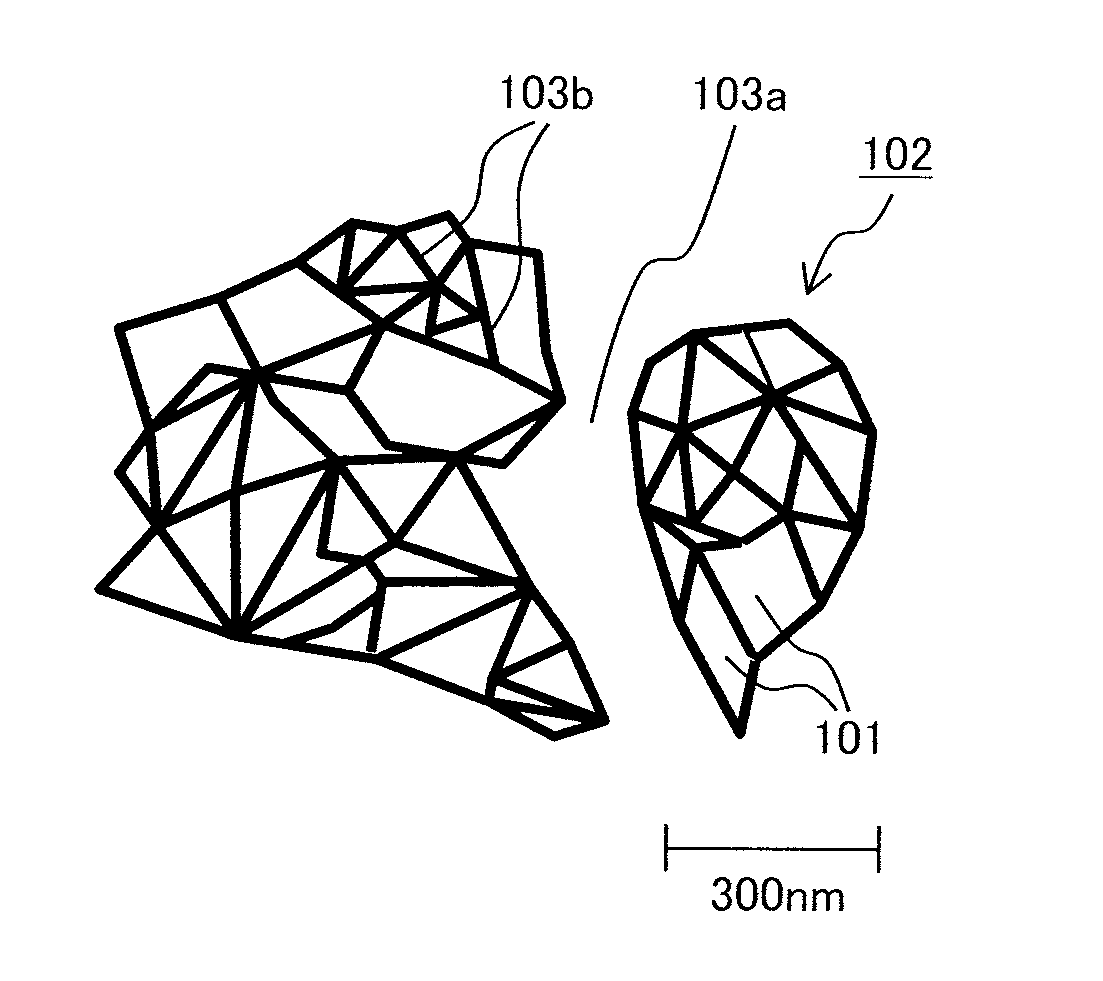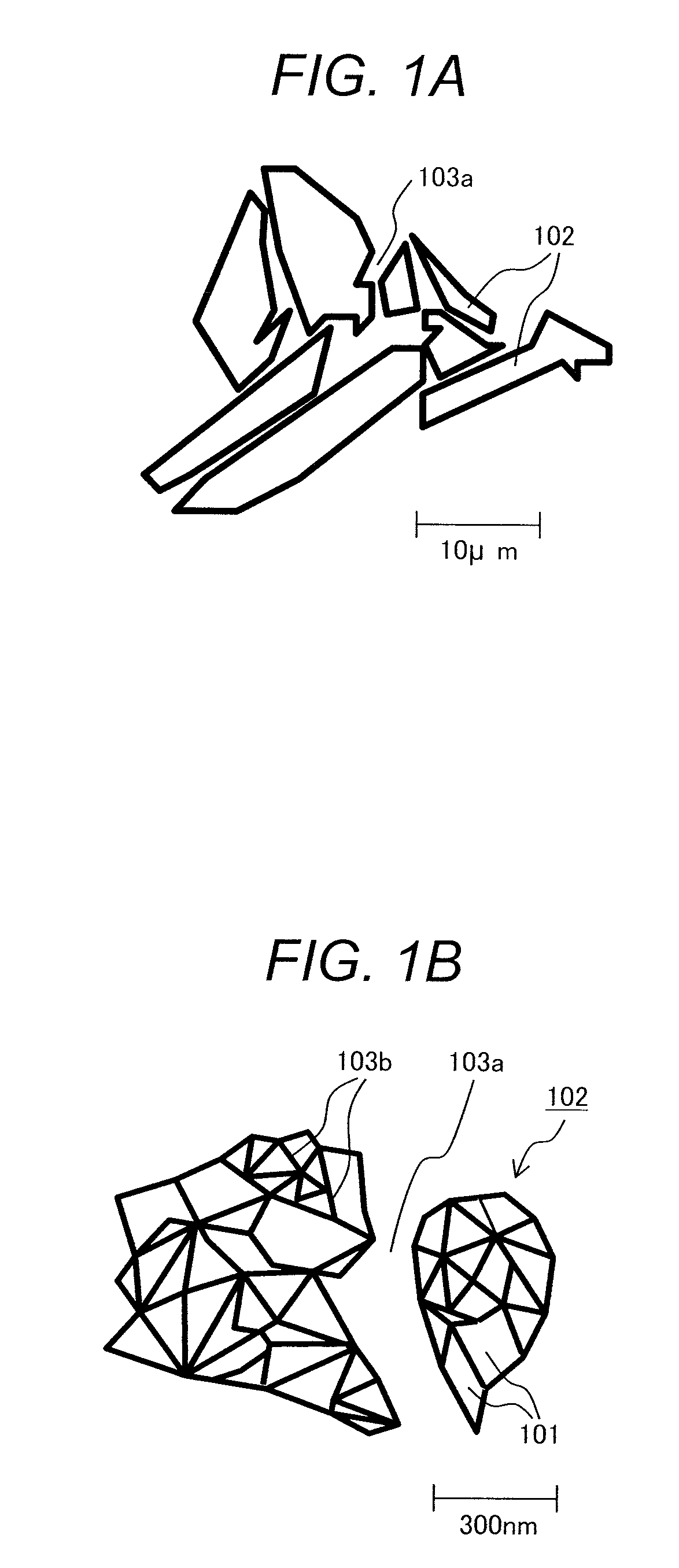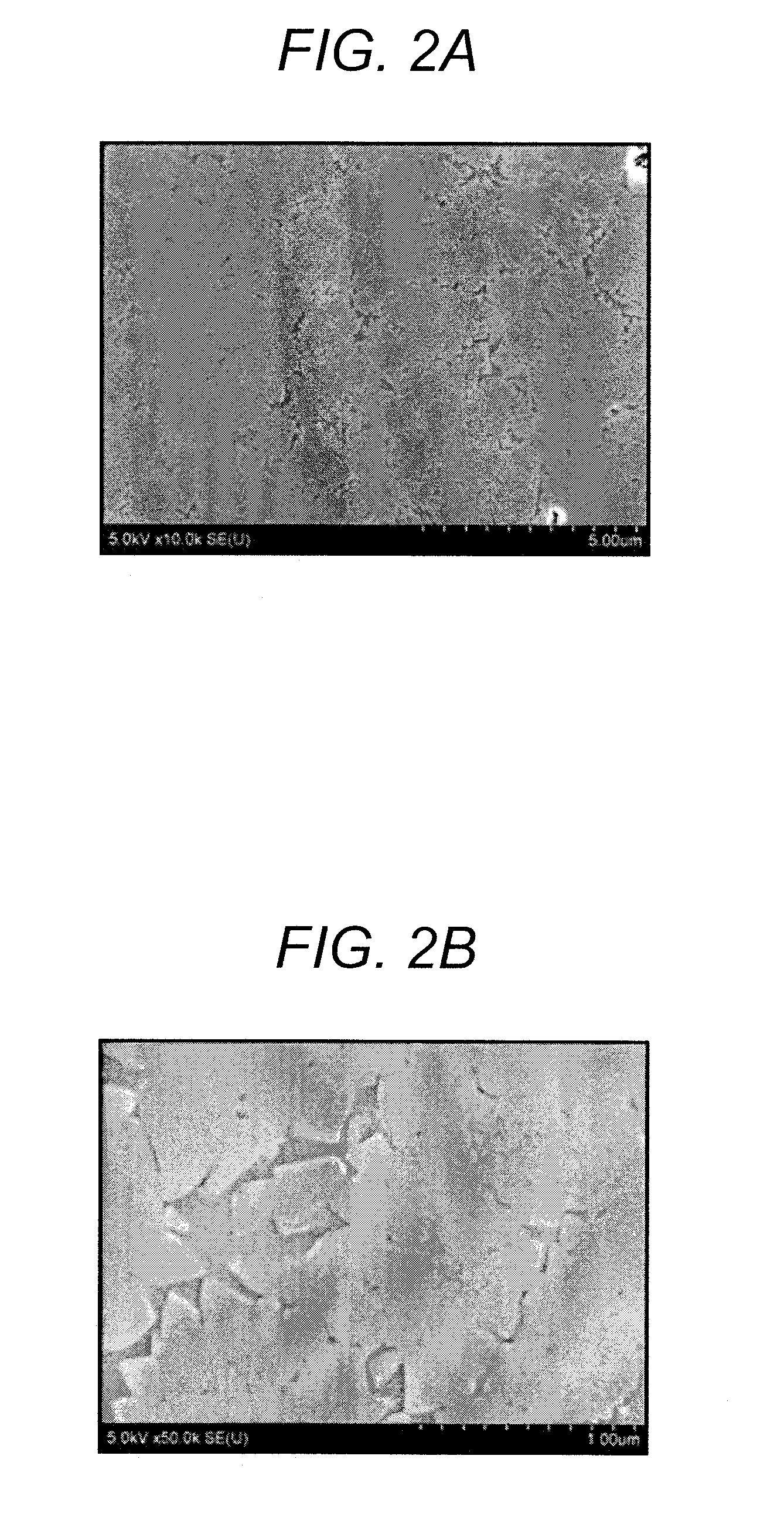Positive electrode active material
a technology of active materials and positive electrodes, applied in the direction of manganates/permanentates, non-metal conductors, cell components, etc., can solve the problems of lithium cobaltate, however, still have the problems associated with safety, and achieve the effect of increasing the battery capacity of lithium ion secondary batteries and high cycle retention rates
- Summary
- Abstract
- Description
- Claims
- Application Information
AI Technical Summary
Benefits of technology
Problems solved by technology
Method used
Image
Examples
examples
(Manufacturing of Oxide Glass)
[0089]Table 1 indicates glass compositions manufactured and studied.
[0090]Any component is represented % by mass (percentage by mass) in terms of oxide. Raw materials for the respective components are vanadium pentoxide, phosphorus pentoxide, ferric oxide, manganese dioxide, silver oxide, silver suboxide, cobalt oxide, nickel oxide, tungstic oxide, molybdenum oxide, boron oxide and silicon oxide. As to lithium, sodium and potassium, lithium carbonate, sodium carbonate and potassium carbonate were used.
[0091]The oxide glass was manufactured in the following way.
[0092]First, raw material compounds were arranged and mixed together to have the composition shown in Table 1, and 300 g of the mixed powder was put into a platinum crucible. Then, the mixture was heated up to a heating temperature described in Table 1 at a temperature increasing rate of 5 to 10° C. / min (° C. / minute) using an electric furnace, and then kept at the constant heating temperature for ...
PUM
 Login to View More
Login to View More Abstract
Description
Claims
Application Information
 Login to View More
Login to View More - R&D
- Intellectual Property
- Life Sciences
- Materials
- Tech Scout
- Unparalleled Data Quality
- Higher Quality Content
- 60% Fewer Hallucinations
Browse by: Latest US Patents, China's latest patents, Technical Efficacy Thesaurus, Application Domain, Technology Topic, Popular Technical Reports.
© 2025 PatSnap. All rights reserved.Legal|Privacy policy|Modern Slavery Act Transparency Statement|Sitemap|About US| Contact US: help@patsnap.com



